The white apron is what every medical student dreams of wearing one day, as the ultimate symbol of medical science.
The white uniform is so important nowadays that medical schools in different parts of the world host formal ceremonies for the first time which senior students will wear.
The institution was started in 1993 in the USA and has now been established in America, England, Canada, Israel, but also in Iran, Pakistan, Brazil, Jamaica and elsewhere.
As an informal initiation ceremony in the liturgy that they will be called to perform, that is, they wear the white apron for a virginal time.

The ultimate symbol of medical science even has its own syndrome. White T-shirt syndrome is commonly called iatrophobia and is evidenced by its increase blood pressure as the patient walks through the doctor's office door.
And finally it turns out that the white apron carries other risks from high levels of stress and hypertension. Studies are constantly finding that the medical apron is a risk factor for health, as it often hosts pathogenic microorganisms, even dangerous bacteria.
One of these surveys, who checked all the previous ones, found that a tragically large percentage are not as clean as patients would have hoped, even carrying germs associated with nosocomial infections.
But how did white become established as the ultimate symbol of modern medicine?

The white apron symbolizes the doctor for a century. This is how you recognize him in a hospital, a clinic, a doctor's office.
However, this was not always the case, everything else. And as a tragic irony, until the end of the 19th century, the medical specialty was certified by blacks.
Doctors wore black clothes, something we can still see today in period movies. THE family doctor Arriving at the movie patient's house is dressed in black, a reminder of Hollywood in the real practice of years past.
Black was the best choice for both symbolic and practical reasons. Black symbolized the formal, the serious, and was thus appropriate for the absolutely important role of the doctor in society.

But it also had a practical hue, as it is always easier to hide stains and stains in the dark than in light-colored clothes.
And so until the end of the 19th century doctors wore black. Exclusively black. "Black" was also their function, as it was most often associated with death. Especially when we talk about the Middle Ages.
As long as medicine got rid of bleeding and things like that microbes came to light, medical associations called for reforms. Stylistic reforms, alas.
The doctor had to reinvent the way he presented himself to the public, as he was associated with blood, pain and death.
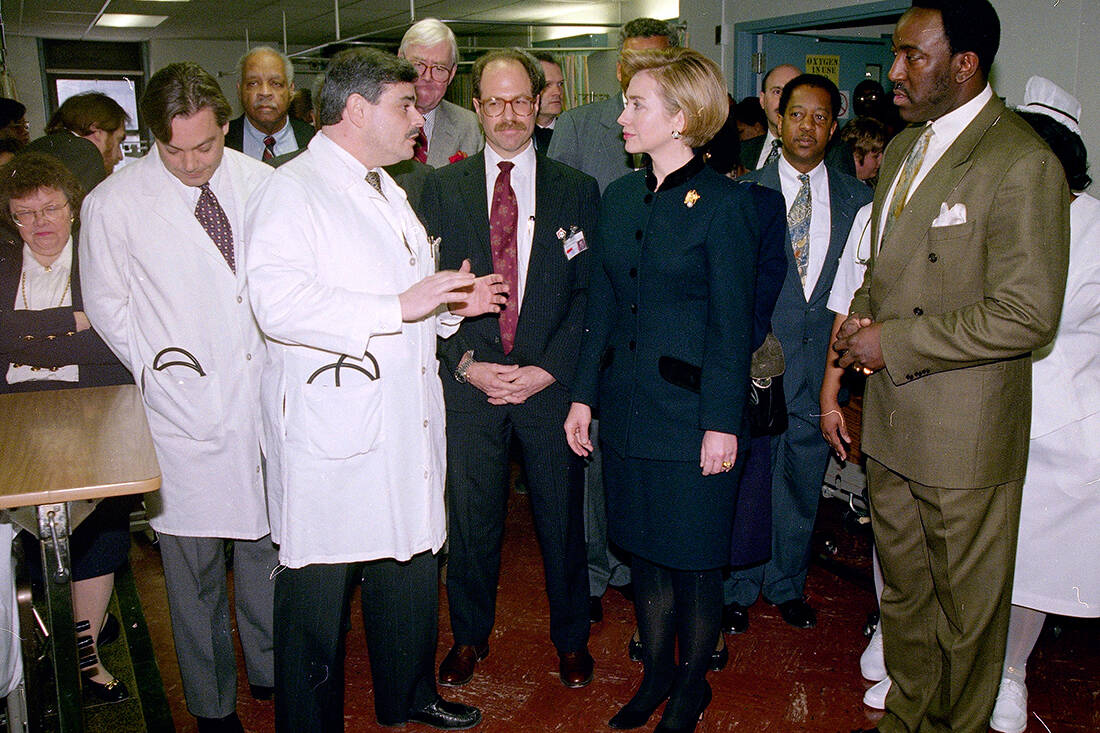
It was time for the medical service to take off the black of mourning and put on the white of cleanliness. Sterile white, as it is typically called by the American Medical Association, which lists a complete chronology of the evolution of the medical apron.
Which development was enshrined in a more general ethic change in nursing care. The hospitals were the first to make the switch to white.
The hospital beds now brought clean white sheets and blankets, they smelled of freshness and health. The nurses were now wearing white protective gear over their hats. It was time for the doctor to put on his elegant white uniform.
For two main reasons. To restore the confidence of the people in their specialty, but also to mark the new era. Now we knew about germs, we knew about the importance of hygiene and white was the best symbol here.

By then even the importance of hand washing had come to light. The white apron embodied all this in the best possible way.
The black coat was once more practical for stains, but also more suitable to accompany the patient to the other world, but now white was her new face medicine.
And this world-historical change happened rather quickly. This is ideally certified by two paintings by the great American painter Thomas Ekins with a difference of 14 years.
The first ("Gross Clinic") is from 1875 and we see doctors dressed in the traditional black suits of the time performing an operation on a man's leg.

Exactly 14 years later (1889), Atkins gave us a second monumental painting, the "Agni Clinic", another operation, where all doctors now wear white aprons.
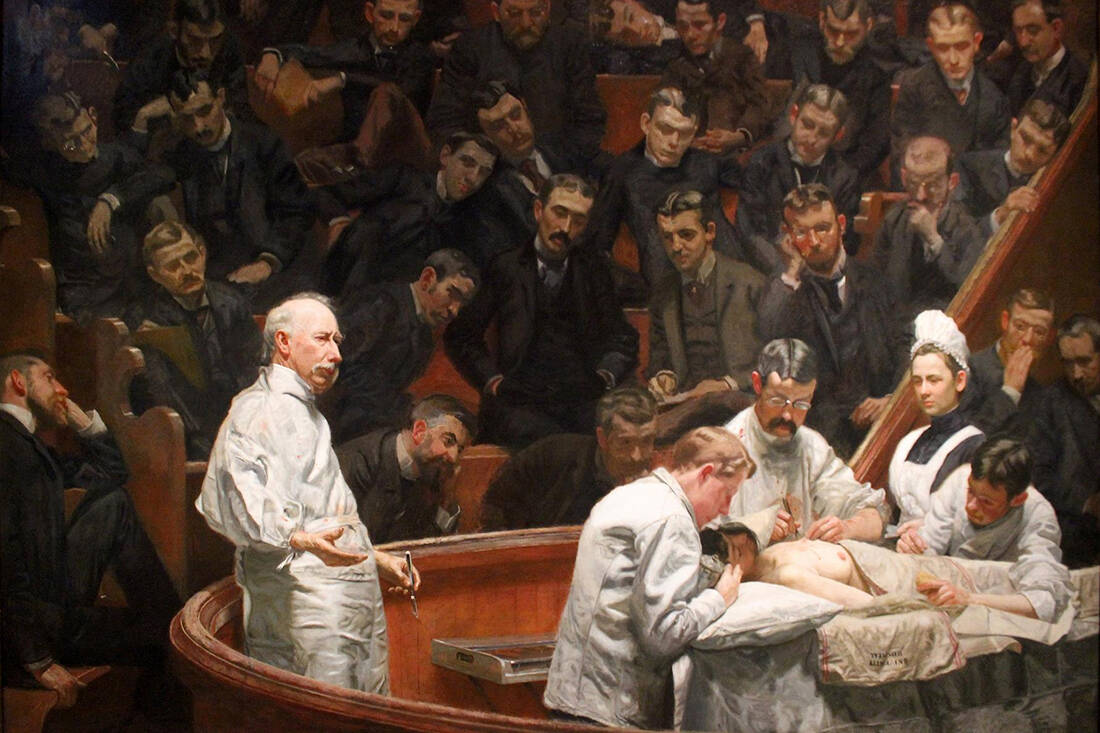
Historical photograph from Massachusetts General Hospital in 1889 captures for the first time surgeons to wear a short-sleeved white apron over their everyday clothes.
Even today, as the American Medical Association assures us, no one knows who was the first, where and when he wore the white apron. It is also unclear who designed it.
However, everyone loved her, as she was sketching a new image of the doctor. The doctor now seemed to be a pure, unblemished source of authority and knowledge, in a medical environment that had drastically improved in the 19th century, not to say transformed.
Science now knew well about viruses and bacteria and how they undermined clinical practice itself. If the hospitals were not clean, if the doctors' clothes were not clean, what treatment could we talk about?

Weight was now given equally in the hygienic conditions in the hospitals. Only if everything was clean could the growth of bacteria and even the spread of communicable diseases be avoided.
Only the color did not only symbolize cleanliness, this new crusade against germs.
As elegantly posed by Dr. Mark S. Hochberg in a 2007 article in the Journal of Ethics, the white color symbolized something else: truth and transparency.
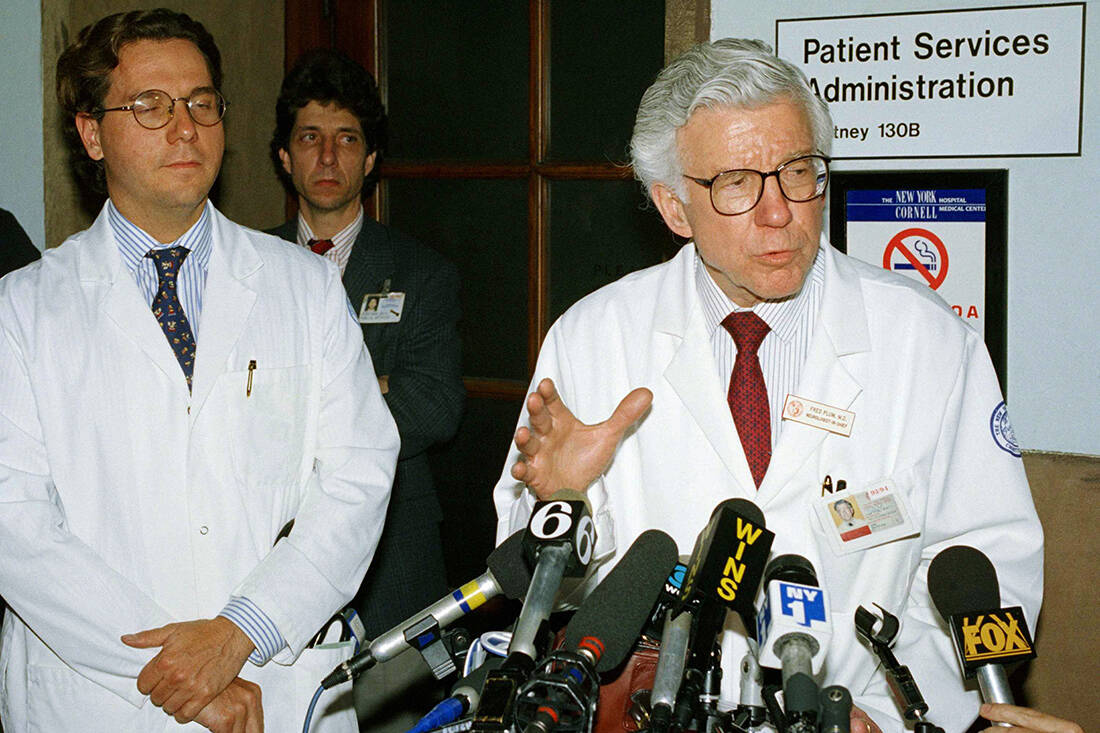
As we approached the end of the 19th century, Western medicine discovered that it had a problem with its image. Joseph Lister had already convinced everyone of the need for antiseptic surgery, and John Snow had already laid the foundations of modern epidemiology, mapping the pattern of the spread of a cholera epidemic in London.
Medical knowledge was galloping and now yielding jealous fruits. In the consciences of most people, however, medicine was just another form of treatment, having about the same place as mysticism, superstition and pseudoscience.
And at the same time the presence of the doctor in the house usually foreshadowed a painful death, a descendant of the Middle Ages.
The fame and repercussions of science were growing rapidly, of course, as its triumphs never ceased. The Industrial Revolution transformed the cities of Europe and America and new discoveries and inventions were presented on a weekly basis in more than a thousand scientific journals.
But medical science needed something more. The doctors took off the traditional black. Formality was not what was needed now, nor was support from relatives. Medicine had to be about life rather than death and white would symbolize this in a wonderful way.
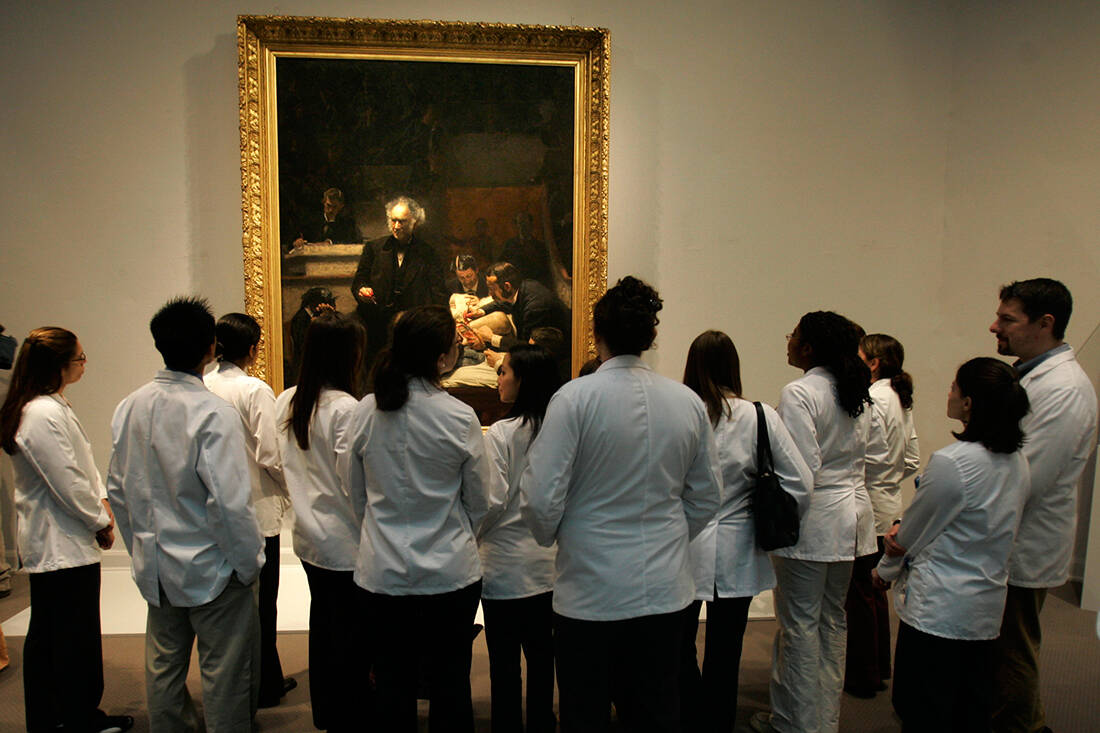
White was not unknown to science. White uniforms were worn by scientists working in laboratories. White aprons would now be worn by doctors, who were finding a new role in society.
The developments were to be unrepeatable in just a few decades. William Osler published his monumental textbook Principles and Practice of Medicine in 1892, taking medicine in a new direction.
In 1910 another milestone was published, the "Flexner Report", which called for reforms in medical studies, demanding that schools set higher admission criteria and orient the medical specialty in its direction. laboratory research.
For the first time in their history, doctors enjoyed real science, the kind of authority that scientists in other disciplines already possessed.
Now they were not literally called home at the last moment, as was the case until the late 19th century, when this custom had turned the doctor not only into a prophet of evil, but rather an angel of death.
In the course of the 20th century, the white apron became the symbol of medical prestige. Respect for medical knowledge, which was proving day by day its value for human life, was finally reflected in the sacred relationship between doctor and patient, which we now consider beneficial to our societies.
Especially since at the end of World War II came the big medical cut, the antibiotic. Antibiotics were the happy ending to Dr. Lister's dream that bacteria could eventually be defeated. For the first time pneumonia, an infected pimple or even a simple toothache could not sentence you to death…
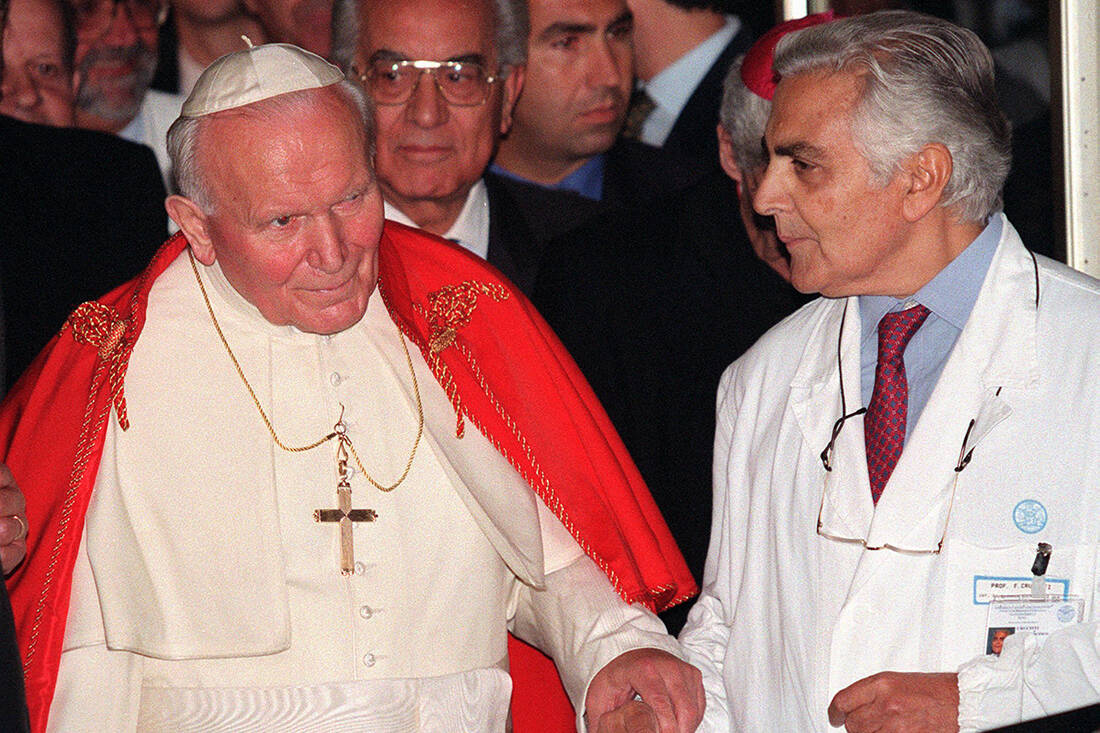
Everything goes its own way and we may be living in the last moments of the white medical apron. This is because research shows that sometimes it does more harm than good.
Especially in hospitals, the white apron seems to be going out of fashion. Surgeons prefer the green or blue apron, as under the blinding light of the surgeries the white color "hurts" the eyes and even results in headaches.
Psychiatrists have long since stopped wearing it, as the white apron embarrassed their own patients. Pediatricians have done the same, the white uniform seemed threatening to the little sick.
Recent studies conclude that even the hospital doctors they no longer want it, as it gives them a sense of "authority and superiority" over the world.
The National Health Service of England even came to ban it in public hospitals in 2007, because it carried a multitude of germs. In 2012, however, he relaxed the ban, when it became clear that the nosocomial infections did not stop without a medical apron.

"Where white aprons are worn, they must be changed at least every week or when they are visibly contaminated," National Health System of England, stressing that "good practice should not support the use of the white apron in the clinical setting".
Something similar happened in 2009 and the American Medical Association banned the white apron, received harsh criticism from hospital doctors, and came to a compromise: more studies were needed to rule.
India was also considering banning it in 2015, when its own studies showed that restricting the white apron to hospitals reduced the spread of disease. The issue, however, remained on the air, as the studies were deemed indecisive.
But it is also the people who do not seem to know what they want. Research is constantly finding that younger people do not want to see doctors in white, but older people do.
In Denmark today you will not see a doctor wearing a white apron. But you will see it that way in Sweden, Norway and Finland.
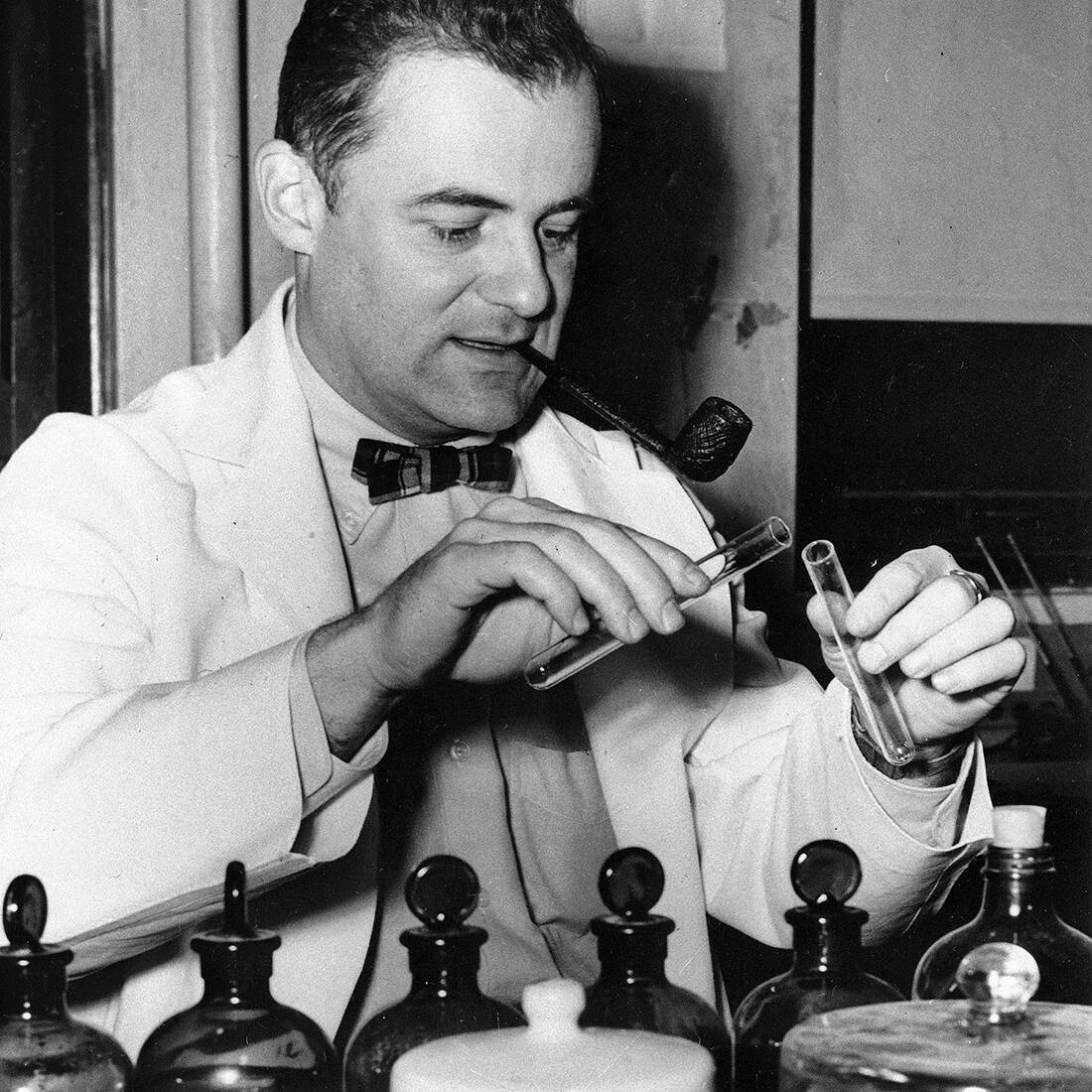
Maybe the white apron has become very threatening for some, a scary symbol that when you see it, you feel like you will get rid of your usual daily life.
It may again be a relic of the past today, when it embodied the structural hierarchy of the physician and his social superiority over the patient.
Maybe for some this "cloak of compassion" that has been for a century remains, the ultimate sign that someone out there cares about your life and knows how to do you good.
The world of medicine has not stopped evolving. And in this spirit, some are now wondering if the white apron ultimately works positively or negatively for the patient.
